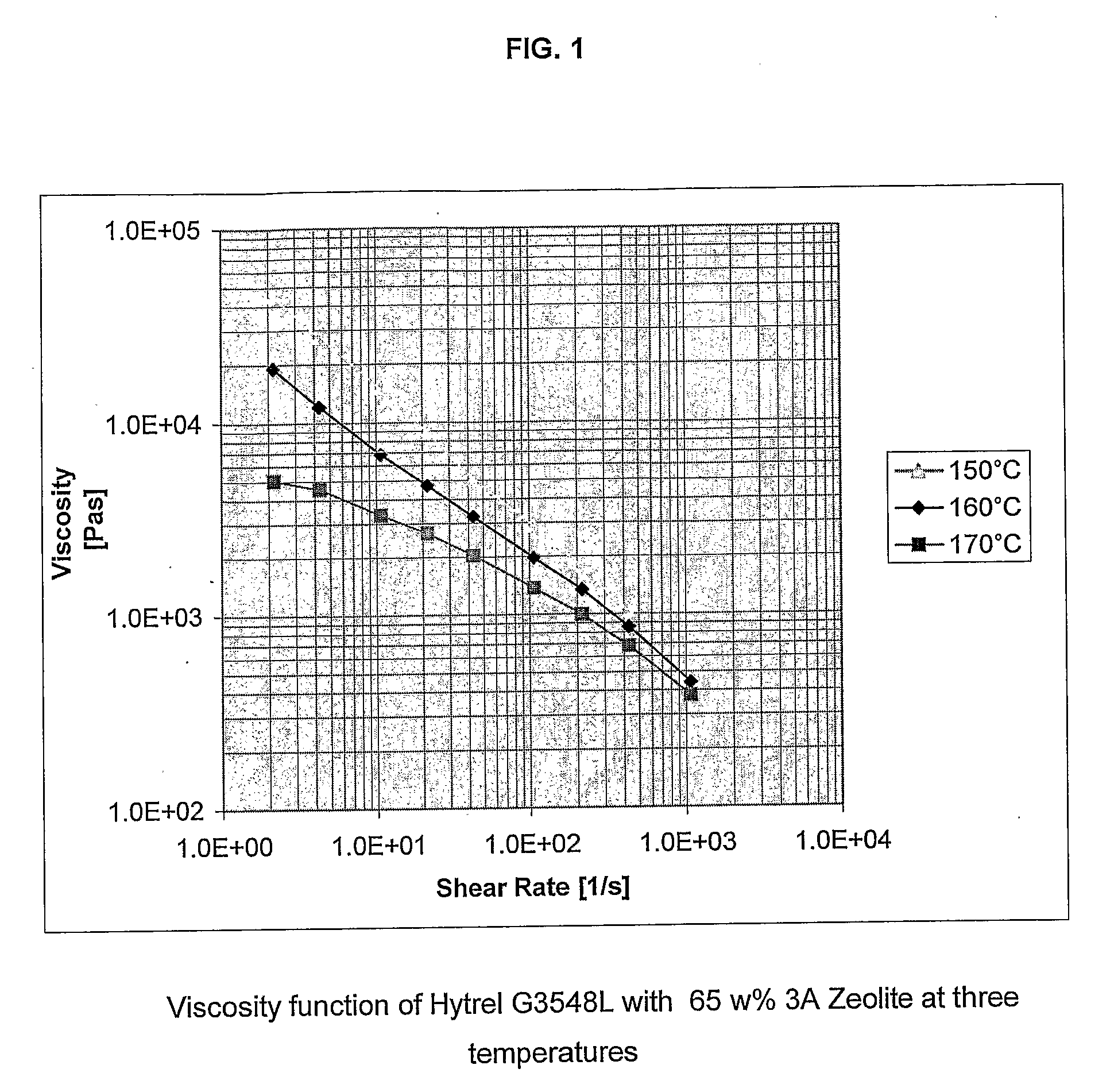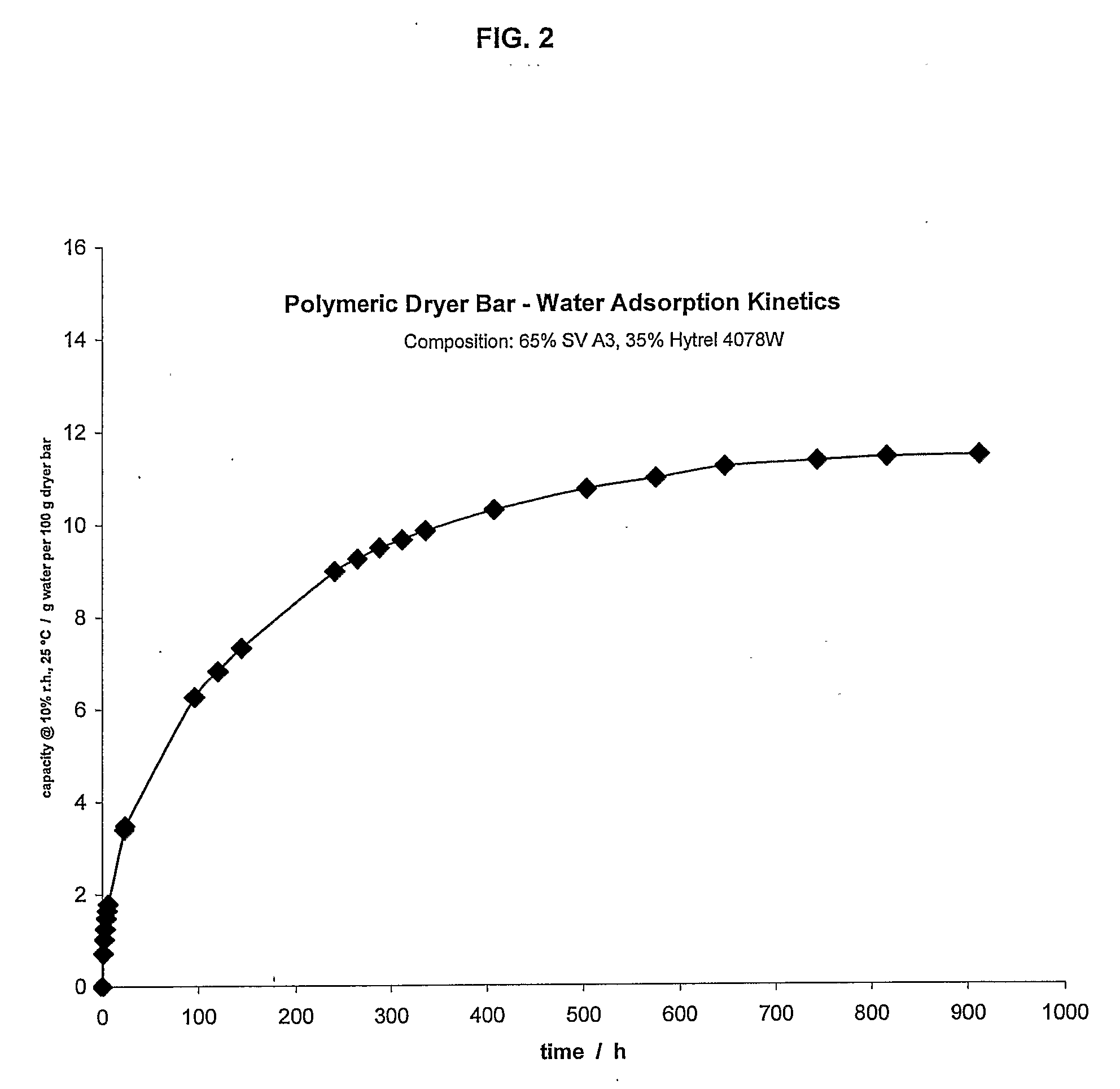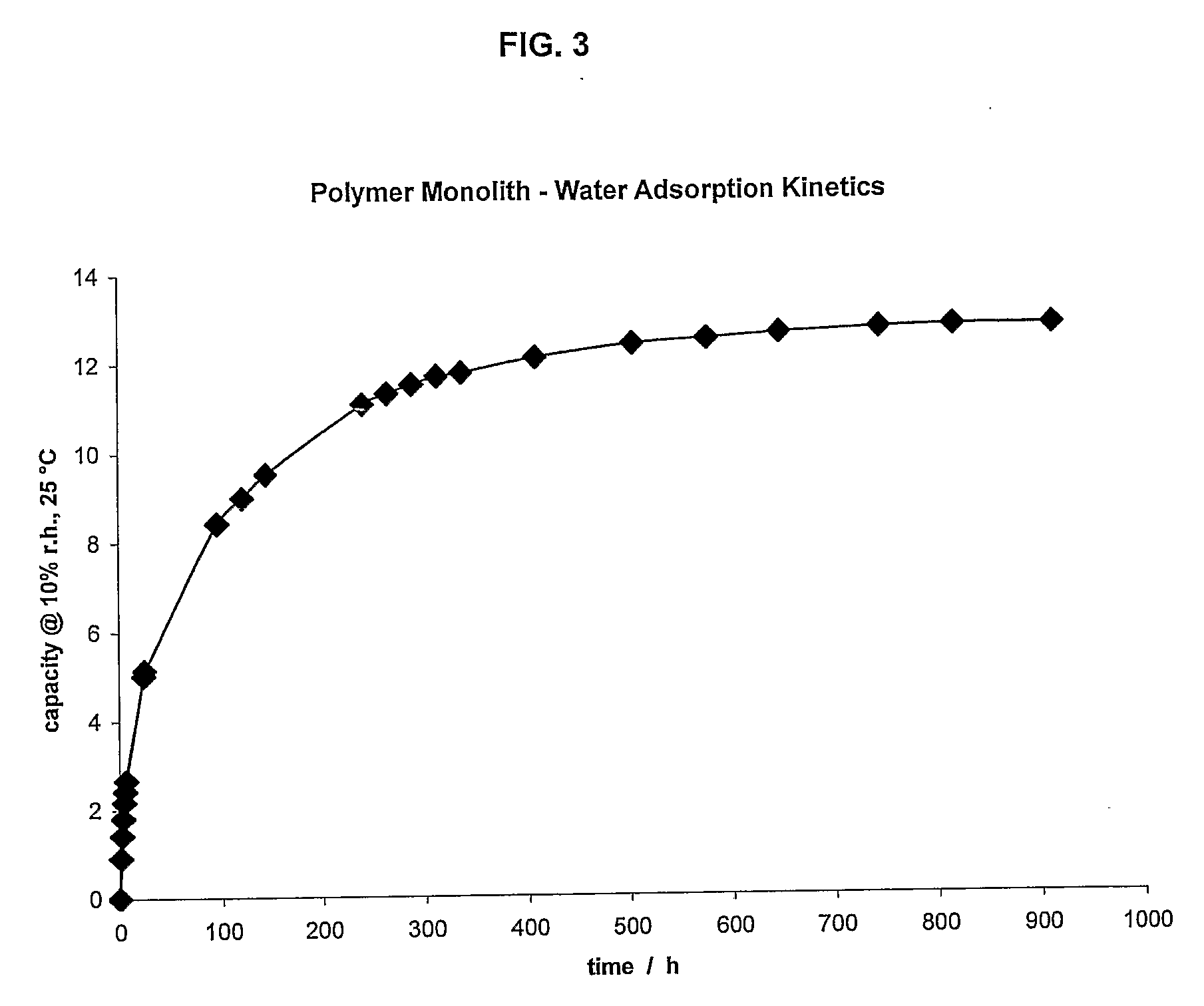Flexible Adsorbent Bodies
a technology of adsorbent bodies and flexible materials, applied in the direction of isotope separation, pressurized chemical processes, lighting and heating apparatus, etc., can solve the problems of inflexibility of polymer films or bodies, and inability to adapt to the needs of us
- Summary
- Abstract
- Description
- Claims
- Application Information
AI Technical Summary
Benefits of technology
Problems solved by technology
Method used
Image
Examples
example 1
[0040]This example relates to the production of a flexible adsorbent body with a diameter of 3 mm. As matrix polymer the PEE-type Hytrel G3548L, available from E.I. DuPont De Nemours & Co. is used. For the adsorption material, a 3A zeolite available from W. R. Grace & Co.-Conn. is utilized. The compound is composed of 35 wt. % Hytrel G3548L and 65 wt. % activated zeolite 3A. The production of the body is carried out in a two-stage process with a separate compounding and moulding procedure. The compounding is performed by means of a co-rotating twin-screw-extruder, type ZSK25 available from Coperion Werner & Pfleiderer. The compounding temperature is 200° C. Moulding directly takes place after the compounding step by means of a single-screw-extruder available from Coperion Werner & Pfleiderer with a 3 mm round extrusion die. The moulding temperature is in the range of 150° C. to 155° C. The extruded body is drawn down by take off rolls and afterwards coiled. After coiling, the spools...
example 2
[0041]This example regards the production of a round zeolitic honeycomb structured adsorbing body with 27.5 mm diameter and 25 mm length. The channel geometry is 1.2×1.2 mm2 and wall thickness 1.6 mm. As matrix polymer the PEE-type Hytrel G5544, available from DuPont is used. The adsorption material is a 3A zeolite available from W. R. Grace & Co.-Conn. The compound consists of 30 wt. % Hytrel G5544 and 70 wt. % activated zeolite 3A based on the total weight of the adsorbing body. These compound components are processed in dry state of form. The production of the honeycomb-structured pieces is carried out in a single stage process. The compounding and moulding is performed by means of a co-rotating twin-screw-extruder, type ZSK25 from Coperion Werner & Pfleiderer. The compounding temperature is 230-240° C. Moulding directly takes place after the compounding step by means of a die allowing to shape honeycomb structures. The temperature of this die is set to be 218-223° C. The extrude...
example 3
[0042]This example relates to the production of a round zeolitic honeycomb structured adsorbing body with 27.5 mm diameter and 25 mm length. The channel geometry is 1.2.×1.2 mm2 and wall thickness 1.0 mm. As matrix polymer the PEE-type Hytrel G5544, from E. I. DuPont is used. The adsorption material is a 3A zeolite from Grace. The compound comprises 30 wt. % Hytrel G5544 and 70 wt. % activated zeolite 3A. These compound components are processed in dry state or form. The production of the honeycomb-structured pieces is carried out in a two-stage process. Step one: Compounding is conducted with a twin-screw extruder referenced in Example 1 at temperatures between 230-240° C., subsequently cooled down and shaped into granulates. Step two: Starting from the granulates moulding takes place by means of a die useful for shaping honeycomb structured pieces attached to a single screw extruder referenced in Example 1. The temperature of this die is set to be 218-223° C. The extruded honeycomb...
PUM
| Property | Measurement | Unit |
|---|---|---|
| Temperature | aaaaa | aaaaa |
| Temperature | aaaaa | aaaaa |
| Temperature | aaaaa | aaaaa |
Abstract
Description
Claims
Application Information
 Login to View More
Login to View More - R&D
- Intellectual Property
- Life Sciences
- Materials
- Tech Scout
- Unparalleled Data Quality
- Higher Quality Content
- 60% Fewer Hallucinations
Browse by: Latest US Patents, China's latest patents, Technical Efficacy Thesaurus, Application Domain, Technology Topic, Popular Technical Reports.
© 2025 PatSnap. All rights reserved.Legal|Privacy policy|Modern Slavery Act Transparency Statement|Sitemap|About US| Contact US: help@patsnap.com



